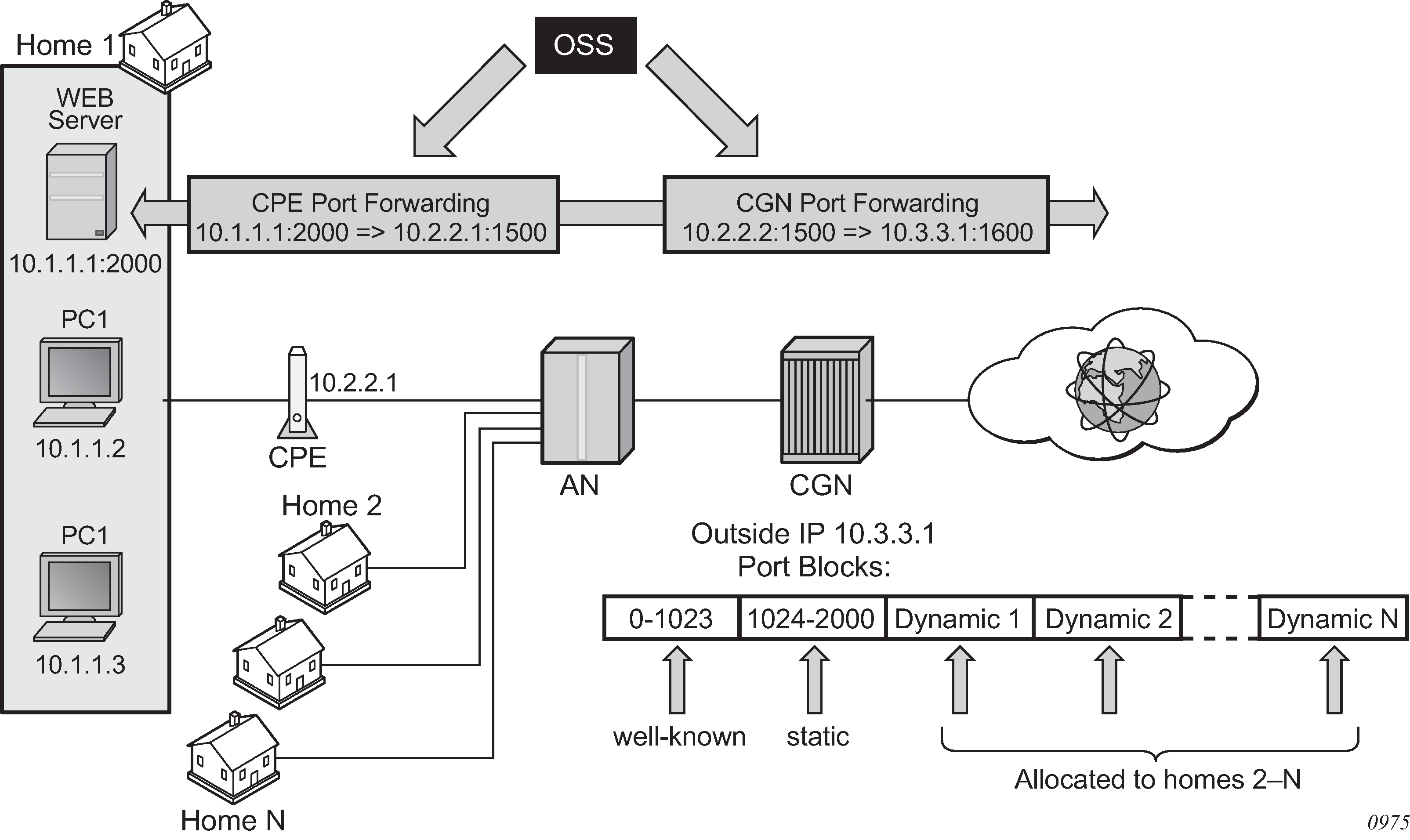The outside IP address is always shared for the subscriber with a port forward (static or via PCP) and the dynamically allocated port block, insofar as the port from the port forward is in the range >1023. This behavior can lead to starvation of dynamic port blocks for the subscriber. An example for this scenario is shown in Figure: Dynamic port block starvation in LSN.
A static port forward for the WEB server in Home 1 is allocated in the CPE and the CGN. At the time of static port forward creation, no other dynamic port blocks for Home 1 exist (PCs are powered off).
Assume that the outside IP address for the newly created static port forward in the CGN is 10.3.3.1.
Over time dynamic port blocks are allocated for a number of other homes that share the same outside IP address, 10.3.3.1. Eventually those dynamic port block allocations exhaust all dynamic port block range for the address 10.3.3.1.
After the dynamic port blocks are exhausted for outside IP address 10.3.3.1, a new outside IP address (for example, 10.3.3.2) is allocated for additional homes.
Eventually the PCs in Home 1 come to life and they try to connect to the Internet. Because of the dynamic port block exhaustion for the IP address 10.3.3.1 (that is mandated by static port forward – Web Server), the dynamic port block allocation fails and consequently, the PCs are not able to access the Internet. There is no additional attempt within CGN to allocate another outside IP address. In the CGN there is no distinction between the PCs in Home 1 and the Web Server when it comes to source IP address. They both share the same source IP address 10.2.2.1 on the CPE.
The solution for this is to reserve a port block (or blocks) during the static port forward creation for the specific subscriber.
